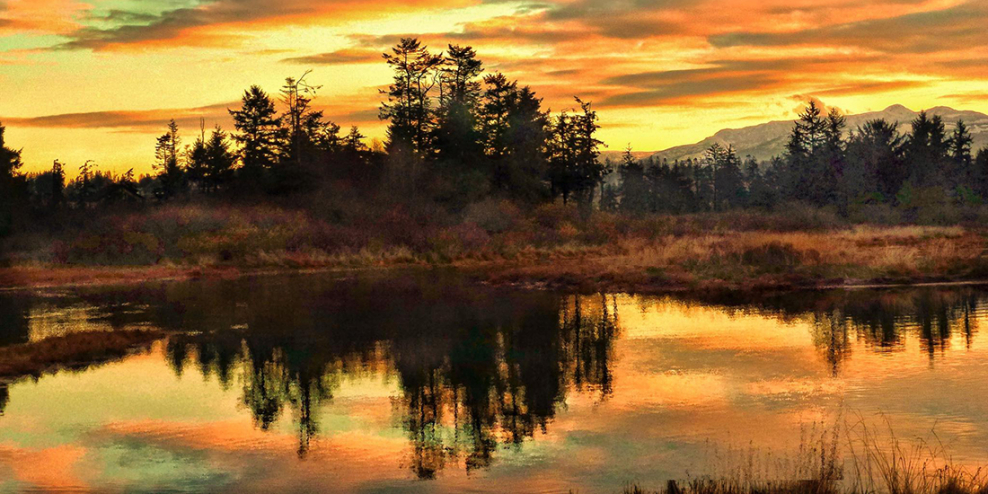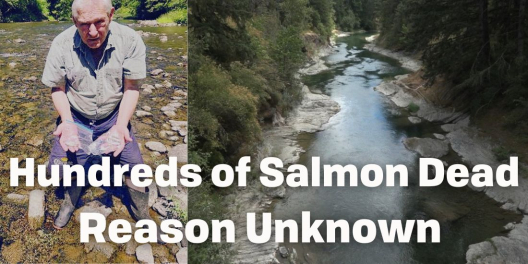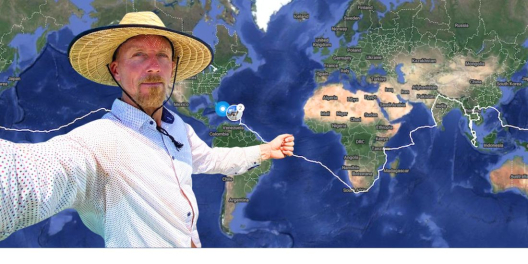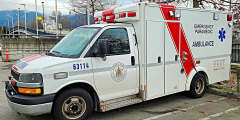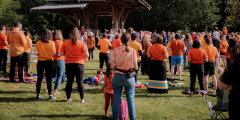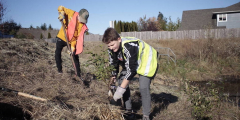The Campbell River Estuary is the picture of serenity.
Cottonwood trees sway over a glossy pond centred in a calming meadow scene. It’s only disturbed by some happy little ducks munching on river weeds and the nearby salmon berries.
You would never guess that only 20 years ago, Baikie Island Reserve was a sludge-filled industrial wasteland. It was a habitat completely destroyed by commercial logging.
Mountains of concrete and gravel were spread over the former wetlands to create work sites. Workers dug channels to make room for log booms, removed the trees and vegetation, and drove machines through water sources.
Essentially, they created a sludgy, polluted, unlivable mess.
Jim Van Tine is a retired hatchery manager for Fisheries and Oceans Canada. “We had a fisheries scientists here, and we looked through the area, and we couldn’t find one remnant of what might make food for fish,” he told the National Observer.
But conservationists were tireless in their push to return the estuary to its former glory, and they’re succeeding.
Starting in 1999, the city of Campbell River joined forces with Nature Conservancy Canada and the Tula Foundation. The coalition pushed for change. But the going was slow, due more to bureaucratic struggles than physical labour.
“It [would take] three years to plan one project and less than three months to do,” said Van Tine. He’s one of the founding architects of the estuary’s revitalization plan.
With the number of tasks needed to make the habitat livable, it took ages to bring it back to life. Now though, you can clearly see the time was well spent.
The estuary is a restoration poster child. It’s living proof that riparian habitats can be revived through careful efforts.
And they’re still going.
While the original goal was to create salmon habitat, Greenways Land Trust now has a squad of volunteers committed to creating a biodiverse ecosystem that can sustain many different native species.
There’s still a problem with garbage and other waste in the estuary. Phil Griffith is part of the Campbell River Salmon Foundation. He and a team of volunteers pulled 70 tires out of the water during the March 2022 Campbell River Estuary cleanup project.
“It’s out of sight, out of mind. But being a heritage river and a big salmon river, the garbage under there has an effect,” Griffith told the Campbell River Mirror.
“Lately they’ve found that there is a chemical leaching from the tires that is hazardous to salmon,” Griffith said. ”It’s been like that for 50 or 60 years. A tire falls off, so you put another one. That’s the way things were done.”
The project has inspired other restoration projects nearby. The K’omoks First Nation recently secured $1.4 million to restore the estuary for the Puntledge and the Tsolum rivers in their traditional territory.
The nation will also turn an old industrial sawmill site back to its origins as a key salmon migration corridor.
While humans are powerhouses when it comes to destroying habitat, it’s nice to see we can be powerhouses at restoring it, too.
